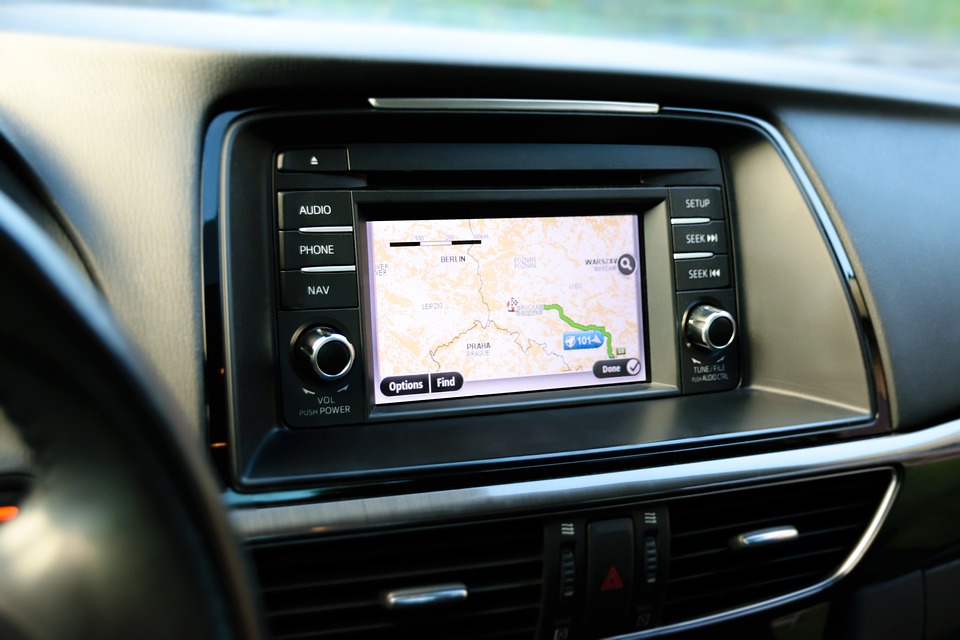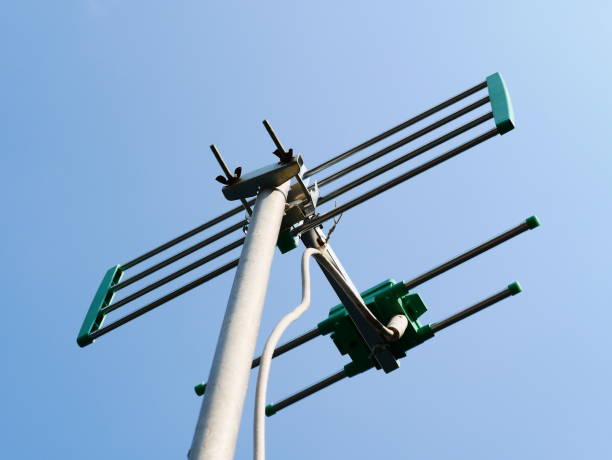What is the Proper Way of Installing a GPS Antenna for Your Car’s Navigation System?
 The external GPS antenna included with in-dash navigation receivers comes with a few simple rules to follow. The first rule is to not cut the antenna or alter it in any way.
The external GPS antenna included with in-dash navigation receivers comes with a few simple rules to follow. The first rule is to not cut the antenna or alter it in any way.
The other rule to keep in mind is that it must keep continuous contact with the GPS satellites that are up above the skies, orbiting the planet. You must install them in such a way that their signal is not hampered, for optimum and uninterrupted connection.
Due to the exceptional strength and reliability of satellite signals today, installing your antenna on this side of your car should be more than sufficient to sustain good reception. Besides, it is a secure and strategic spot that will help keep the antenna out of sight while serving the purpose of keeping it in place.
When deciding where to put your antenna with GPS antenna functionality, we recommend that you have it on the dashboard. Or you can have it behind the back deck. For as long as it travels into the sky and veers away from two-way antennas, it should be working as expected.
However, you should consider mounting your antenna on the outside of your vehicle under any of the following conditions:
- Your vehicle does have a rear defroster that is wired.
- Your car does have a metallic window tint.
- Your car comes with a solar reflective window.
- There you have on your windshield a fixed windshield radio antenna.
In addition, the GPS antenna should be leveled and connected to a metal plate or sheet, if one is present. In almost all cases, the antenna will be secured with some type of adhesive. To complete the installation, you’ll need to route the antenna wire to the rear of the receiver in a location such as a trunk, on the floorboard, door seal, or window.
Connecting the Parking Brake Wire
Any video screen fronting your vehicle, for safety reasons, must be linked to the parking brake wire. This measure will also apply to GPS systems.
While your vehicle is in active motion, some of its navigation systems are deactivated. If you want to change the unit’s default settings or lookup a particular phone number, then you don’t have much of a choice, but you must first pull over.

If you want to change the unit’s default settings or lookup a particular phone number, then you don’t have much of a choice, but you must first pull over. In some cases, a connection to the foot brake would be necessary as well.
Connecting Reverse Signal Wire
Various navigation systems are also attached to the car’s reverse signal wire. A connection of this kind informs the navigation system when the vehicle is in reverse mode. If this cable is not linked, the direction of the vehicle will not be properly monitored. Hence, the navigation system can’t be expected to operate correctly.
The most commonly used method is to hook up to the reverse light wire situated directly behind the tail light. A multimeter will be needed to check each wire that goes to the tail light.
To test if the car’s battery is getting a 12V voltage, you should have a multimeter connected to a wire. Ask someone around you to put the car in reverse mode (apply the brake while doing so, of course). Perform this drill with each wire and repeat the process until you identify the correct one.
If you get a 12-volt reading, remember to check the brakes rather than the reverse wire. If you get a reading, moments after the brake is pressed, then you’ve just identified the brake wire.
There are numerous possible locations for the reverse wire; it can be found under the dash or in the engine compartment. We suggest that you first analyze your vehicle’s wiring system to ensure you are getting the right one. It is easy to access by tapping on the tail light.
What is the Proper Way of Installing a GPS Antenna for Your Car’s Navigation System? Read More »
 The external GPS antenna included with in-dash navigation receivers comes with a few simple rules to follow. The first rule is to not cut the antenna or alter it in any way.
The external GPS antenna included with in-dash navigation receivers comes with a few simple rules to follow. The first rule is to not cut the antenna or alter it in any way.
The other rule to keep in mind is that it must keep continuous contact with the GPS satellites that are up above the skies, orbiting the planet. You must install them in such a way that their signal is not hampered, for optimum and uninterrupted connection.
Due to the exceptional strength and reliability of satellite signals today, installing your antenna on this side of your car should be more than sufficient to sustain good reception. Besides, it is a secure and strategic spot that will help keep the antenna out of sight while serving the purpose of keeping it in place.
When deciding where to put your antenna with GPS antenna functionality, we recommend that you have it on the dashboard. Or you can have it behind the back deck. For as long as it travels into the sky and veers away from two-way antennas, it should be working as expected.
However, you should consider mounting your antenna on the outside of your vehicle under any of the following conditions:
- Your vehicle does have a rear defroster that is wired.
- Your car does have a metallic window tint.
- Your car comes with a solar reflective window.
- There you have on your windshield a fixed windshield radio antenna.
In addition, the GPS antenna should be leveled and connected to a metal plate or sheet, if one is present. In almost all cases, the antenna will be secured with some type of adhesive. To complete the installation, you’ll need to route the antenna wire to the rear of the receiver in a location such as a trunk, on the floorboard, door seal, or window.
Connecting the Parking Brake Wire
Any video screen fronting your vehicle, for safety reasons, must be linked to the parking brake wire. This measure will also apply to GPS systems.
While your vehicle is in active motion, some of its navigation systems are deactivated. If you want to change the unit’s default settings or lookup a particular phone number, then you don’t have much of a choice, but you must first pull over.

If you want to change the unit’s default settings or lookup a particular phone number, then you don’t have much of a choice, but you must first pull over. In some cases, a connection to the foot brake would be necessary as well.
Connecting Reverse Signal Wire
Various navigation systems are also attached to the car’s reverse signal wire. A connection of this kind informs the navigation system when the vehicle is in reverse mode. If this cable is not linked, the direction of the vehicle will not be properly monitored. Hence, the navigation system can’t be expected to operate correctly.
The most commonly used method is to hook up to the reverse light wire situated directly behind the tail light. A multimeter will be needed to check each wire that goes to the tail light.
To test if the car’s battery is getting a 12V voltage, you should have a multimeter connected to a wire. Ask someone around you to put the car in reverse mode (apply the brake while doing so, of course). Perform this drill with each wire and repeat the process until you identify the correct one.
If you get a 12-volt reading, remember to check the brakes rather than the reverse wire. If you get a reading, moments after the brake is pressed, then you’ve just identified the brake wire.
There are numerous possible locations for the reverse wire; it can be found under the dash or in the engine compartment. We suggest that you first analyze your vehicle’s wiring system to ensure you are getting the right one. It is easy to access by tapping on the tail light.


 One glance at an antenna system with visible elements and you can easily tell if it is capable of receiving UHF, VHF, or both. Outdoor UHF types of antenna come with short elements, and they are usually only a few inches wide. You will notice that manufacturing firms would be arranging them in parallel rows of straight prongs.
One glance at an antenna system with visible elements and you can easily tell if it is capable of receiving UHF, VHF, or both. Outdoor UHF types of antenna come with short elements, and they are usually only a few inches wide. You will notice that manufacturing firms would be arranging them in parallel rows of straight prongs.